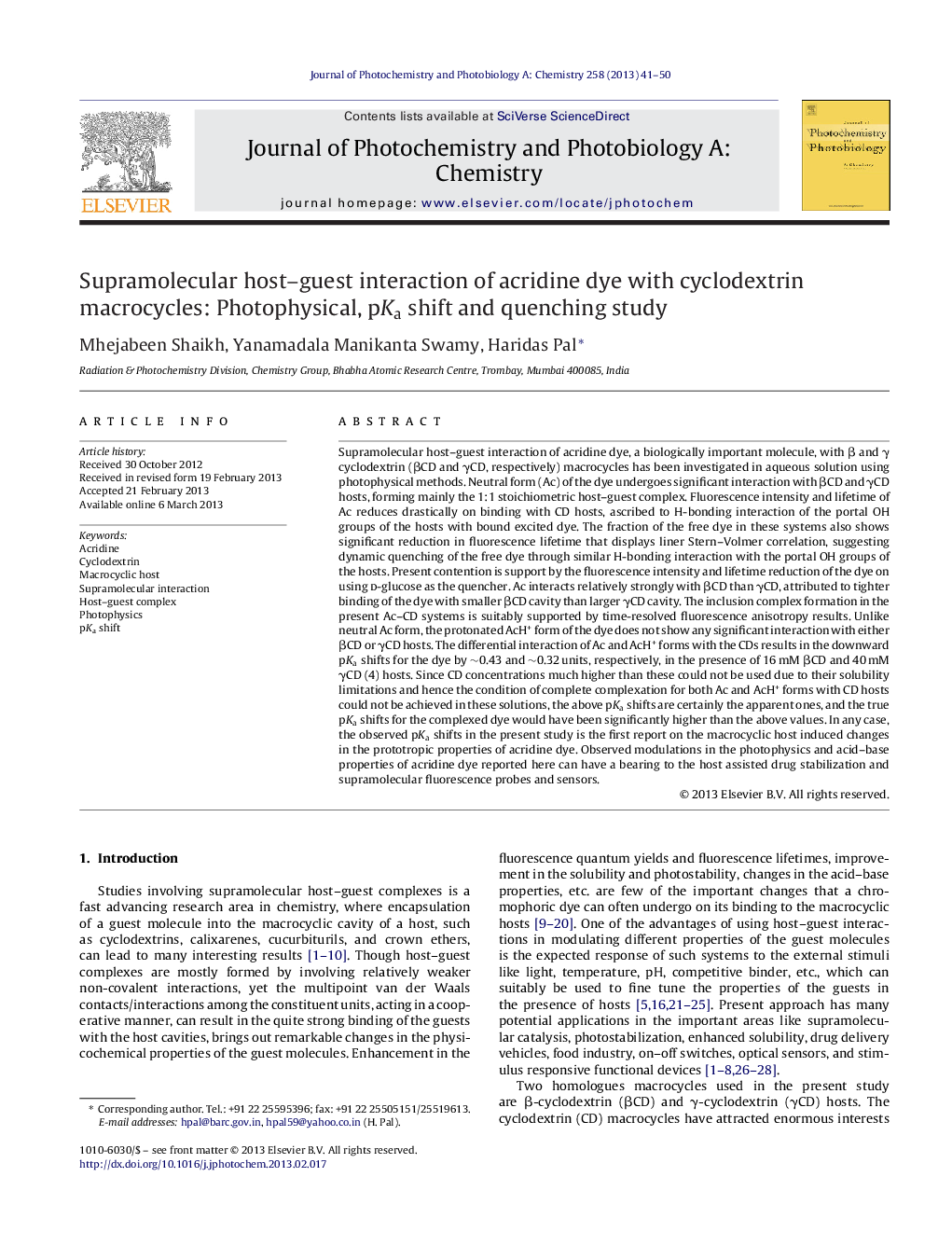| کد مقاله | کد نشریه | سال انتشار | مقاله انگلیسی | نسخه تمام متن |
|---|---|---|---|---|
| 27690 | 44037 | 2013 | 10 صفحه PDF | دانلود رایگان |

Supramolecular host–guest interaction of acridine dye, a biologically important molecule, with β and γ cyclodextrin (βCD and γCD, respectively) macrocycles has been investigated in aqueous solution using photophysical methods. Neutral form (Ac) of the dye undergoes significant interaction with βCD and γCD hosts, forming mainly the 1:1 stoichiometric host–guest complex. Fluorescence intensity and lifetime of Ac reduces drastically on binding with CD hosts, ascribed to H-bonding interaction of the portal OH groups of the hosts with bound excited dye. The fraction of the free dye in these systems also shows significant reduction in fluorescence lifetime that displays liner Stern–Volmer correlation, suggesting dynamic quenching of the free dye through similar H-bonding interaction with the portal OH groups of the hosts. Present contention is support by the fluorescence intensity and lifetime reduction of the dye on using d-glucose as the quencher. Ac interacts relatively strongly with βCD than γCD, attributed to tighter binding of the dye with smaller βCD cavity than larger γCD cavity. The inclusion complex formation in the present Ac–CD systems is suitably supported by time-resolved fluorescence anisotropy results. Unlike neutral Ac form, the protonated AcH+ form of the dye does not show any significant interaction with either βCD or γCD hosts. The differential interaction of Ac and AcH+ forms with the CDs results in the downward pKa shifts for the dye by ∼0.43 and ∼0.32 units, respectively, in the presence of 16 mM βCD and 40 mM γCD (4) hosts. Since CD concentrations much higher than these could not be used due to their solubility limitations and hence the condition of complete complexation for both Ac and AcH+ forms with CD hosts could not be achieved in these solutions, the above pKa shifts are certainly the apparent ones, and the true pKa shifts for the complexed dye would have been significantly higher than the above values. In any case, the observed pKa shifts in the present study is the first report on the macrocyclic host induced changes in the prototropic properties of acridine dye. Observed modulations in the photophysics and acid–base properties of acridine dye reported here can have a bearing to the host assisted drug stabilization and supramolecular fluorescence probes and sensors.
Figure optionsDownload as PowerPoint slideHighlights
► Interactions of acridine dye with cyclodextrin hosts have been investigated.
► Host–guest complexes with 1:1 stoichiometry are mainly formed in these systems.
► Complexation with CD causes significant modulations in the photophysical and acid–base properties of the dye.
► Can have implications in host assisted drug stabilization and supramolecular fluorescence probes and sensors.
Journal: Journal of Photochemistry and Photobiology A: Chemistry - Volume 258, 15 April 2013, Pages 41–50